- No products in the cart.
Elefloks tab n / about 10 pcs 500mg
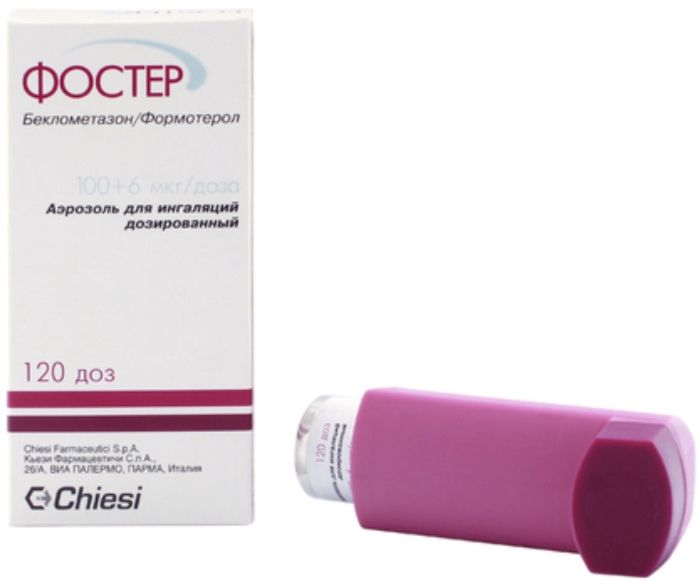
Foster spray ing. scrapper. 6mkg + 0.1mg / dose 120doz
$50.90
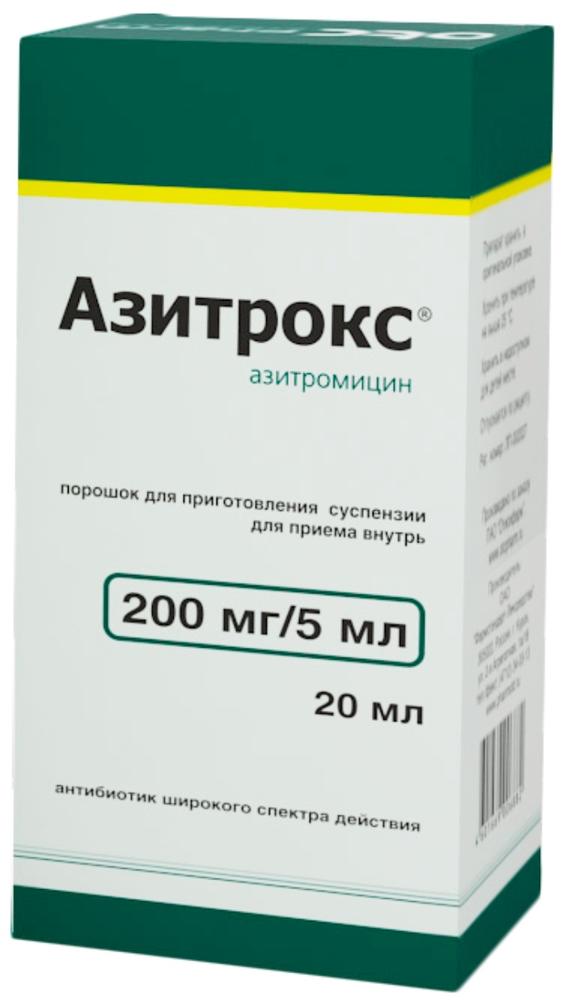
Azitroks prig.susp.dlya powder for oral 200mg / 5ml vial 15.9g one piece with the measuring spoon and a pipette
$7.09
$16.79
Elefloks tab n / about 10 pcs 500mg
SKU: 054627842 Categories: Antibacterial, Antibiotics, antimicrobial, antiparasitic, Medicaments Tags: levofloxacin, Ranbaxy RX
Description
Composition
Active substance:
1 tablet coated with a film coating comprising: a levofloxacin hemihydrate – 512.76 mg, equivalent levofloxacin – 500 mg.
Excipients:
Excipients: Microcrystalline cellulose (Avicel PH 101) – 77.94 mg of microcrystalline cellulose (Avicel PH 102) – 40.00 mg Hypromellose (5 cps) – 17,00 mg Polysorbate 80 – 1,70 mg crospovidone – 23.80 mg magnesium stearate – 6.80 mg Opadry 03V52874 – 20.00. Ingredients Opadry 03V52874: hypromellose 2910 6 csp (E464) -62.50 mg titanium dioxide (E 171) – 29.675 mg macrogol – 6.250 mg Yellow iron oxide – 1.410 mg iron oxide red – 0.165 mg.
Description:
Yellowish pink oval biconvex tablets, film-coated, engraved with “500” on one side.
Pharmacotherapeutic group: antimicrobial – fluoroquinolone.
Product form:
Table. 500 mg.
Contraindications
Hypersensitivity to levofloxacin or other quinolones, as well as the excipients of the formulation; epilepsy; tendon damage during the earlier treatment of quinolones; childhood and adolescence (18 years) (due to incomplete growth of the skeleton, as it is impossible to completely eliminate the risk of cartilage growth points); Pregnancy and breast-feeding period (you can not completely eliminate the risk of cartilage growth points and the fetus and child); myasthenia gravis. renal failure with creatinine clearance less than 20 mL / min. In patients with a creatinine clearance less than 50 mL / min impossible to use in dosing regimen with initial dosage of 250 mg / 24 hours. In patients with a creatinine clearance less than 20 mL / min impossible to use in dosing regimen with initial dosage of 500 mg / 24 h, and 500 mg / 12 hr.
Precautions: in patients predisposed to the development of seizures in patients with previous lesions of the central nervous system (CNS) in patients receiving both drugs that lower seizure threshold of the brain availability, such as fenbufen. theophylline] (see. See “The interaction with other drugs”). Patients with latent or manifest deficiency of glucose-6-phosphate dehydrogenase (increased risk of hemolytic reactions in the treatment of quinolones). In patients with known QT interval prolongation factors of risk: elderly patients; in female patients, patients with uncorrected electrolyte disorders (hypokalemia, hypomagnesemia); syndrome of congenital QT interval prolongation; cardiac diseases (cardiac insufficiency, myocardial infarction, bradycardia); while taking drugs can prolong QT interval (antiarrhythmics Class IA and III, tricyclic antidepressants, macrolides. neuroleptics) (see. the sections “Overdose”, “Interaction with other drugs,” “special instructions”). In patients with diabetes receiving oral hypoglycemic agents, e.g., glyburide or preparations of insulin (increasing the risk of hypoglycemia). In patients with severe adverse reactions to other fluoroquinolones. such as severe neurological reaction (similar to an increased risk of adverse reactions when applying levofloxacin). Patients with psychosis or in patients with a history of mental illness (see. Section “Special Instructions”). Patients with impaired renal function with creatinine clearance 50-20 ml / min (see also. See “Contra ‘).
Indications
Bacterial infections that are sensitive to levofloxacin in adults, acute sinusitis, acute exacerbations of chronic bronchitis, community-acquired pneumonia, uncomplicated urinary tract infections, complicated with urinary tract infections (including pyelonephritis), chronic bacterial prostatitis, – infection of skin and soft tissues, for the treatment of drug-complex resistant tuberculosis, prevention and treatment of anthrax with droplet path infection. In the application of levofloxacin should be considered the official national guidance on the appropriate use of antimicrobials, as well as the sensitivity of the pathogen in a particular country (see. “Special Instructions” section).
Interaction with other drugs
Quinolones in combination with drugs that lower seizure threshold (e.g., theophylline. Fenbufenom and other nonsteroidal anti-inflammatory drugs), can cause a marked reduction threshold for seizure activity. levofloxacin concentration while the application fenbufen increased by only 13%. The effect of the drug Elefloks significantly attenuated while the use of sucralfate. The same thing occurs while the application of magnesium or aluminum containing antacids, iron salts, didanosine (only formulations containing as buffer aluminum or magnesium). Elefloks should take no less than 2 hours before or 2 hours after administration of these agents. Calcium salts have a minimal effect on the absorption of levofloxacin when taken orally. In patients treated with levofloxacin in combination with indirect anticoagulants (eg, with vitamin K antagonists – warfarin), there was an increase in prothrombin time / international normalized ratio and / or the development of bleeding, including, and heavy. Therefore, while the use of anticoagulants and levofloxacin requires regular monitoring of blood coagulation parameters. Excretion (renal clearance) of levofloxacin slightly slowed down by the action of cimetidine and probenecid. When combined with hypoglycemic drugs requires strict control of the concentration of glucose in the blood, since there is a possibility of hyper- and hypoglycaemia. Levofloxacin increases T1 / 2 ciclosporin 33%. Since this increase is not clinically significant, dose adjustment of cyclosporine when applied simultaneously with levofloxacin is required. Receiving corticosteroids increase the risk of tendon rupture. Levofloxacin. like other fluoroquinolones, should be used with caution in patients taking drugs lengthening QT interval (e.g., antiarrhythmic drugs of class III and IA, tricyclic antidepressants. macrolides, antipsychotics). Conducted clinical and pharmacological studies to investigate possible pharmacokinetic interactions of levofloxacin with digoxin, glibenclamide. ranitidine and warfarin have shown that the pharmacokinetics of levofloxacin while the use of these drugs is not changed sufficiently that it had clinical significance.
pharmachologic effect
Pharmacological group:
Fluoroquinolone antibacterial drug.
Pharmacodynamics:
Elefloks – a synthetic antibacterial agent of a broad spectrum fluoroquinolone. containing as active substance levofloxacin -levovraschayuschy isomer of ofloxacin. Levofloxacin blocks DNA gyrase, and crosslinking gives supercoiling of DNA breaks, inhibits DNA synthesis. It causes profound morphological changes in the cytoplasm. cell wall and membranes of bacteria. Levofloxacin is active against most strains of microorganisms in conditions in vitro and in vivo. Sensitive organisms (MIC 2 mg / L; 17 mm zone of inhibition): Aerobic Gram-positive bacteria: Bacillus anthracis, Corynebacterium diphtheriae, Corynebacterium jeikeium, Enterococcus spp. (Including Enterococcus faecalis), Listeria monocytogenes, Staphylococcus spp. methicillin-susceptible coagulase-moderately sensitive (including Staphylococcus aureus methicillin-sensitive, Staphylococcus epidermidis methicillin), Streptococcus spp. (Groups C and G), Streptococcus agalactiae, Streptococcus pneumoniae penicillin-sensitive / -umerenno sensitive / -rezistentnye, Streptococcus pyogenes, Streptococcus spp. viridans group Penicillin-sensitive / -rezistentnye. Gramotritsatelnye aerobic microorganisms: Acinetobacter spp. (Including Acinetobacter baumanii), Actinobacillus actinomycetemcomitans, Citrobacter freundii, Eikenella corrodens, Enterobacter spp. (Including Enterobacter aerogenes, Enterobacter cloacae), Escherichia coli, Gardnerella vaginalis, Haemophilus ducreyi, Haemophilus influenzae ampicillin-sensitive / -rezistentnye, Haemophilus parainfluenzae, Helicobacter pylori, Klebsiella spp. (Including Klebsiella pneumoniae, Klebsiella oxytoca), Moraxella catarrhalis (and producing no-producing beta-lactamase strains), Morganella morganii, Neisseria gonorrhoeae (and producing no penicillinase), Neisseria meningitidis, Pasteurella spp. (Including Pasteurella multocida, Pasteurelia dagmatis, Pasteurelia canis), Proteus mirabilis, Proteus vulgaris, Providencia spp. (Including Providencia stuartii, Providencia rettgeri), Pseudomonas spp. (Including Pseudomonas aeruginosa), Salmonella spp., Serratia spp. (Including Serratia marcescens). Nosocomial infections caused by Pseudomonas aeruginosa, may require combination antibiotic therapy. Anaerobic microorganisms: Bacteroides fragilis, Bifidobacterium spp, Clostridium perfringens, Fusobacterium spp, Peptostreptococcus, Propionibacterum spp, Veilonella spp…. Other microorganisms: Bartonella spp, Chlamydia pneumoniae, Chlamydia psittaci, Chlamydia trachomatis, Legionella spp.. (Incl Legionella pneumophila), Mycobacterium spp. (Including Mycobacterium leprae, Mycobacterium tuberculosis), Mycoplasma hominis, Mycoplasma pneumoniae, Rickettsiae spp., Ureaplasma urealyticum. Moderately sensitive (MIC = 4 mg / L; 14-16 mm zone of inhibition)
Aerobic gram-positive microorganisms: Corynebacterium urealyticum, Corynebacterium xerosis, Enterococcus faecium, Staphylococcus epidermidis methicillin. Staphylococcus haemolyticus methicillin-resistant. Aerobic Gram-negative microorganisms: Campilobacter jejuni, Campilobacter coli. Anaerobic microorganisms: Vasteroides vulgatus, Bacteroides ovatus, Prevotella spp, Porphyromonas spp.. Resistant (MIC of 8 mg / L: 13 mm zone of inhibition): Aerobic Gram-positive microorganisms. Staphylococcus aureus methicillin-resistant, and other Staphylococcus spp. coagulase methicillin. Aerobic gram negative microorganisms: Alcaligenes xylosoxidans. Anaerobic microorganisms: Bacteroides thetaiotaomicron. Other microorganisms. Mycobacterium avium. Levofloxacin resistance develops as a result of a gradual process of gene mutations encoding both types of topoisomerase II: DNA gyrase and topoisomerase IV. Other resistance mechanisms such as a mechanism to effect a penetration barriers microbial cells (mechanism characteristic of Pseudomonas aeruginosa) and efflux mechanism (antimicrobial active excretion of microbial cells), may also reduce the sensitivity of microorganisms to levofloxacin. Due to the nature of the mechanism of action of levofloxacin is usually not observed cross-resistance between levofloxacin and other antimicrobial agents.
The clinical effectiveness (effectiveness in clinical trials in the treatment of infections caused by microorganisms listed below). Aerobic gram-positive microorganisms: Enterococcus faecalis, Staphylococcus aureus, Streptococcus pneumoniae, Streptococcus pyogenes. Aerobic Gram-negative microorganisms: Citrobacter freundii, Enterobacter cloacae, Escherichia coli, Haemophilus influenzae, Haemophilus parainfluenzae, Klebsiella pneumoniae, Moraxella (Branhamella) catarrhalis, Morganella morganii, Proteus mirabilis, Pseudomonas aeruginosa, Serratia marcescens. Other: Chlamydia pneumoniae, Legionella pneumophila, Mycoplasma pneumoniae.
Pharmacokinetics:
Levofloxacin is rapidly and almost completely absorbed after oral administration, food intake has little effect on its absorption. Absolute oral bioavailability is 99-100%. After a single dose of 500 mg of levofloxacin maximum plasma concentration (Cmax) is achieved within 1 to 2 hours and was 5.2 + 1.2 pg / ml. Pharmacokinetics of levofloxacin is linear over a dose range from 50 to 1000 mg. The equilibrium state plasma concentrations of levofloxacin when receiving 500 mg of levofloxacin 1 or 2 times daily is achieved within 48 hours. At the 10 day oral levofloxacin 500 mg 1 time per day C max was 5.7 + 1.4 pg / ml. and the minimum concentration of levofloxacin (concentration before the next dose intake) (Cmin) in the plasma was 0.5 + 0.2 pg / ml. On day 10 oral levofloxacin 500 mg 2 times a day C max was 7.8 + 1.1 pg / ml. and Cmin – 3.0 + 0.9 pg / ml. Communication with serum proteins is 30-40%. Following single and repeated administration of 500 mg of levofloxacin is levofloxacin volume of distribution, on average, 100 l, which indicates a good penetration of levofloxacin in human organs and tissues. Penetration into bronchial mucosa, epithelial lining of the secret, alveolar macrophages. After a single 500 mg oral levofloxacin maximum concentrations of levofloxacin in bronchial mucosa and secretions of the epithelial lining attained for 1 hour or 4 hours and were 8.3 g / g and 10.8 ug / ml. respectively, with coefficients of penetration in bronchial mucosa and epithelial lining of the secret, as compared to the concentration in the blood plasma components 1,1-1.8 and 0.8-3, respectively. After 5 days of ingestion of 500 mg of levofloxacin average concentration of levofloxacin 4 hours after the last dose in a secret epithelial lining was 9.94 g / ml and in alveolar macrophages – 97.9 ug / ml. Penetration into Lung Tissue
The maximum concentration in lung tissue after oral administration of 500 mg of levofloxacin was approximately 11.3 mg / g and was reached after 4-6 hours after dosing with coefficients penetration 2-5. compared to the concentration in the blood plasma. After 3 days of 500 mg of levofloxacin 1 or 2 times per day maximum concentration of levofloxacin in alveolar secret achieved within 2-4 hours after dosing and was 4.0 and 6.7 ug / ml. respectively, with a coefficient of penetration 1 compared with the concentration in the blood plasma. Levofloxacin penetrates well into the cortical and cancellous bone, as in the proximal and in the distal femur, with a penetration rate (bone / blood plasma) 0.1-3. The maximum concentration of levofloxacin in the spongy bone of the proximal femur after receiving 500 mg of the drug inside was about 15.1 g / g (at 2 hours after drug administration). Levofloxacin does not penetrate into the cerebrospinal fluid. After oral administration of 500 mg of levofloxacin 1 time per day for 3 days, the average concentration of levofloxacin in prostate tissue was 8.7 mg / g, the average ratio of the concentrations of the prostate gland / blood plasma was 1.84. The mean concentration in urine after 8-12 hours after ingestion of a dose of 150, 300 and 600 mg of levofloxacin were 44 ug / ml, 91 .mu.g / ml and 162 ug / ml, respectively. Levofloxacin is metabolized to a small extent (5% of the dose). Its metabolites are demetillevofloksatsin and N-oxide levofloxacin. which are excreted by the kidneys. Levofloxacin is stereochemically stable and does not undergo chiral transformations. After oral levofloxacin relatively slowly cleared from the blood plasma (half-life (T1 / 2) 6-8 h). Excretion is carried out mainly via the kidney (85% of the dose). Total clearance of levofloxacin after a single dose of 500 mg was 175 ± 29,2 ml / min. There were no significant differences in the pharmacokinetics of levofloxacin when administered intravenously, and the reception is not inside. Hence, ingestion and intravenous administration are interchangeable.
Pharmacokinetics in specific patient groups
Differences in the pharmacokinetics of levofloxacin in men and no women. Pharmacokinetics in elderly patients does not differ from the pharmacokinetics in younger patients, with the exception of indicators related to age-related changes in creatinine clearance (CC). In renal failure of Levofloxacin pharmacokinetics changes. As the deterioration of renal function excretion via the kidneys and renal clearance (S1R) decrease, and T1 / 2 is increased. The pharmacokinetics in kidney failure after a single 500 mg oral levofloxacin formulation. When CC (ml / min)
Conditions of supply of pharmacies
On prescription.
side effects
By frequency side effects are separated according to WHO criteria into the following categories: very often (greater than or equal to 1: 10); commonly (greater than or equal to 1: 100 and
Uncommon: rash, pruritus, urticaria, rash. Frequency unknown (post-marketing data) toxic epidermal necrolysis, Stevens-Johnson syndrome, exudative erythema multiforme, photosensitivity reactions (hypersensitivity to sunlight and UV radiation) (see “Special instructions.”), Leukocytoclastic vasculitis, stomatitis. The reactions of the skin and mucous membranes can sometimes develop even after the first dose. Violations by skeletnomyshechnoy system and connective tissue. Uncommon: arthralgia. myalgia. Rare: tendon lesion, including tendinitis (eg Achilles tendon), muscular weakness, which can be especially dangerous in patients with gravis (myasthenia gravis) (see section “Special Instructions”.). Frequency unknown (post-marketing data): rhabdomyolysis, tendon rupture (. For example, the Achilles tendon This side effect can be observed within 48 hours after initiation of treatment and can carry two-way nature (see also section “special instructions”).), Ligament rupture, rupture muscles, arthritis. Violations by the metabolism and nutrition
Uncommon: anorexia. Rare: hypoglycemia, particularly in patients with diabetes (possible signs of hypoglycemia, “wolf” appetite, nervousness, sweating, trembling).
Frequency not known: hyperglycemia, hypoglycemic coma (see “Special Instructions” section.). Infectious and parasitic diseases. Uncommon: fungal infections, the development of resistance of pathogens. Violations by the vessels. Rare: decrease in blood pressure. Common disorders. Uncommon: asthenia. Rare: pyrexia (fever). Frequency not known: Pain (including pain in back, chest, and extremities). Нарушения со стороны иммунной системы. Редко: ангионевротический отек. Частота неизвестна (постмаркетинговые данные): анафилактический шок. анафилактоидный шок. Анафилактические и анафилактоидные реакции могут иногда развиваться даже после приема первой дозы препарата. Disorders of the liver and biliary tract
Часто: повышение активности «печеночных» ферментов в крови (например, аланинаминотрансферазы (АлАТ). аспартатаминотрансферазы (АсАТ)), повышение активности щелочной фосфатазы (ЩФ) и гаммаглутамилтрансферазы (ГГТ). Нечасто: повышение концентрации билирубина в крови. Частота неизвестна (постмаркетинговые данные): тяжелая печеночная недостаточность, включая случаи развития острой печеночной недостаточности, иногда с фатальном исходом, особенно у пациентов с тяжелым основным заболеванием (например, у пациентов с сепсисом) (см. раздел «Особые указания»); гепатит, желтуха. Нарушения психики.
Часто: бессонница. Нечасто: чувство беспокойства, тревога, спутанность сознания. Редко: психические нарушения (например, галлюцинации, паранойя), депрессия, ажитация (возбуждение), нарушения сна, ночные кошмары. Частота неизвестна (постмаркетинговые данные): нарушения психики с нарушениями поведения с причинением себе вреда, включая суицидальные мысли и суицидальные попытки. Другие возможные нежелательные эффекты. относящиеся ко всем фторхинолонам. Очень редко: приступы порфирии (очень редкой болезни обмена веществ) у пациентов с порфирией.
special instructions
Госпитальные инфекции, вызванные синегнойной палочкой (Рseudomonas aeruginosa), могут потребовать комбинированного лечения. Распространенность приобретенной резистентности высеваемых штаммов микроорганизмов может изменяться в зависимости от географического региона и с течением времени. В связи с этим требуется информация о резистентности к препарату в конкретной стране. Для терапии тяжелых инфекций или при неэффективности лечения должен быть установлен микробиологический диагноз с выделением возбудителя и определением его чувствительности к левофлоксацину. При лечении лиц старческого возраста следует иметь в виду, что больные этой группы часто страдают нарушениями функции почек. Сообщалось об очень редких случаях удлинения интервала QT у пациентов, принимающих фторхинолоны, в том числе левофлоксацин. При применении левофлоксацина, как и других фторхинолонов, следует соблюдать осторожность у пациентов с известными факторами риска удлинения интервала QT: у пациентов с нескорректированными электролитными нарушениями (с гипокалиемией, гипомагниемией); с синдромом врождённого удлинения интервала QT; с заболеваниями сердца (сердечная недостаточность. инфаркт миокарда, брадикардия); при одновременном приеме лекарственных препаратов, способных удлинять интервал QТ, таких как антиаритмические средства класса IА и III, трициклические антидепрессанты, макролиды, нейролептики. Пациенты пожилого возраста и пациенты женского пола могут быть более чувствительными к препаратам, удлиняющим интервал QТ. Поэтому следует с осторожностью применять у них фторхинолоны, включая левофлоксацин. Во время лечения препаратом Элефлокс возможно развитие приступа судорог у больных с предшествующим поражением головного мозга, обусловленным, например, инсультом или тяжелой травмой. Судорожная активность может повышаться и при одновременном применении фенбуфена и других нестероидных противовоспалительных препаратов или теофиллина (см. «Взаимодействие»). Несмотря на то. что фотосенсибилизация отмечается при применении левофлоксацина очень редко, для предотвращения ее развития пациентам не рекомендуется во время лечения и в течение 48 ч после окончания лечения левофлоксацином подвергаться без особой необходимости сильному солнечному или искусственному ультрафиолетовому облучению (например, посещать солярий). При подозрении на псевдомембранозный колит следует немедленно отменить Элефлокс и начать соответствующее лечение. При лечении псевдомембранозного колита препараты, тормозящие перистальтику кишечника, противопоказаны. При подозрении на тендинит следует немедленно прекратить лечение препаратом Элефлокс и начать соответствующее лечение пораженного сухожилия, например, обеспечив ему состояние покоя. У пациентов с латентным или манифестированным дефицитом глюкозо-6-фосфатдегидрогеназы имеется предрасположенность к гемолитическим реакциям (разрушение эритроцитов) при лечении хинолонами. В связи с этим лечение таких больных левофлоксацином следует проводить с осторожностью. Как и при применении других антибиотиков, применение левофлоксацина, особенно в течение длительного времени, может приводить к усиленному размножению нечувствительных к нему микроорганизмов (бактерий и грибов), что может вызывать изменения микрофлоры, которая в норме присутствует у человека. В результате может развиться суперинфекция. Поэтому в ходе лечения обязательно проводить повторную оценку состояния пациента, и, в случае развития во время лечения суперинфекции, следует принимать соответствующие меры. Имеется высокая вероятность того, что метициллин-резистентный золотистый стафилококк будет резистентным к фторхинолонам. включая левофлоксацин. Поэтому левофлоксацин не рекомендуется для лечения установленных или предполагаемых инфекций. вызываемых метициллин-резистентным золотистым стафилококком, в случае если лабораторные анализы не подтвердили чувствительности этого микроорганизма к левофлоксацину. Левофлоксацин может вызывать серьезные, потенциально фатальные, реакции гиперчувствительности (ангионевротический отек, анафилактический шок), даже при применении начальных доз. Пациентам следует немедленно прекратить прием препарата и обратиться к врачу. При приеме левофлоксацина наблюдались случаи тяжелых буллезных кожных реакций, таких как синдром Стивенса-Джонсона или токсический эпидермальный некролиз. В случае развития каких-либо реакций со стороны кожи или слизистых оболочек пациент должен немедленно обратиться к врачу и не продолжать лечения до его консультации. Сообщалось о случаях развития печеночного некроза, включая развитие фатальной печеночной недостаточности при применении левофлоксацина, главным образом, у пациентов с тяжелыми основными заболеваниями. например, с сепсисом. Пациенты должны быть предупреждены о необходимости прекращения лечения и срочного обращения к врачу в случае появления признаков и симптомов поражения печени, таких как анорексия, желтуха, потемнение мочи, зуд и боли в животе. Как и при применении других хинолонов, при применении левофлоксацина наблюдались случаи развития гипергликемии и гипогликемии, обычно у пациентов с сахарным диабетом, получающих одновременно лечение пероральными гипогликемическими препаратами (например, глибенкламидом) или препаратами инсулина. Сообщалось о случаях развития гипогликемической комы. У пациентов с сахарным диабетом требуется мониторинг концентрации глюкозы в крови. При применении хинолонов, включая левофлоксацин, сообщалось о развитии психотических реакций, которые в очень редких случаях прогрессировали до развития суицидальных мыслей и нарушений поведения с причинением себе вреда (иногда после приема разовой дозы левофлоксацина. При развитии таких реакций лечение левофлоксацином следует прекратить и назначить соответствующую терапию. Следует с осторожностью назначать препарат пациентам с психозами или пациентам, имеющим в анамнезе психические заболевания. При развитии любых нарушений зрения необходима немедленная консультация офтальмолога. У пациентов, принимающих левофлоксацин. определение опиатов в моче может приводить к ложноположительным результатам, которые следует подтверждать более специфическими методами. Левофлоксацин может ингибировать рост Mycobacterium tuberculosis и приводить в дальнейшем к ложноотрицательным результатам бактериологического диагноза туберкулеза. У пациентов, принимающих фторхинолоны, включая левофлоксацин, отмечалась сенсорная и сенсорно-моторная периферическая нейропатия, начало которой может б� �ть быстрым. Если у пациента появляются симптомы нейропатии, применение левофлоксацина должно быть прекращено. Это минимизирует возможный риск развития необратимых изменений. Фторхинолоны. включая левофлоксацин, характеризуются блокирующей нервно-мышечное проведение активностью и могут усиливать мышечную слабость у пациентов с псевдопаралитической миастенией. В постмаркетинговом периоде наблюдались неблагоприятные реакции, включая легочную недостаточность, потребовавшую проведение искусственной вентиляции легких, и смертельный исход, которые ассоциировались с применением фторхинолонов у пациентов с псевдопаралитической миастенией. Применение левофлоксацина у пациента с установленным диагнозом псевдопаралитической миастении не рекомендуется. Применение левофлоксацина у человека по этому показанию основано на данных по чувствительности к нему Bacillus anthracis, полученных в исследованиях in vitro и в экспериментальных исследованиях, проведенных на животных, а также на ограниченных данных применения левофлоксацина у человека. Лечащие врачи должны обращаться к национальным и/или международным документам, которые отражают выработанную общими усилиями точку зрения по лечению сибирской язвы. Effects on ability to drive and use machines. Такие побочные эффекты как головокружение и сонливость могут снижать психомоторные реакции и способность к концентрации внимания. Это может представлять собой определенный риск в ситуациях, когда эти способности имеют особое значение. При управлении автомобилем, при обслуживании машин и механизмов, при выполнении работ в неустойчивом положении необходимо соблюдать осторожность.
Storage conditions
Keep out of reach of children at a temperature not higher than 25 ° C.
Dosing and Administration
The drug is taken orally once or twice a day. Таблетки не разжевывать и запивать достаточным количество жидкости (от 0,5 до 1 стакана), можно принимать перед едой или между приемами пищи. Doses are determined by the nature and severity of the infection and the sensitivity of the alleged pathogen. Больным с клиренсом креатинина > 50 мл/мин рекомендуется следующий режим дозирования: острый синусит: по 500 мг 1 раз в день -10-14 дней, обострение хронического бронхита: по 500 мг 1 раз в день – 7-10 дней, внебольничная пневмония: по 500 мг 1-2 раза в день – 7-14 дней, неосложненные инфекции мочевыводящих путей: по 250 мг 1 раз в день – 3 дня, осложненные инфекции мочевыводящих путей: по 500 мг 1 раз в день – 7-14 дней, пиелонефрит: по 500 мг 1 раз в день 7-10 дней, хронический бактериальный простатит: по 500 мг – 1 раз в день – 28 дней, инфекции кожи и мягких тканей: по 500 мг – 1-2 раза в день -7-14 дней, комплексная терапия лекарственно-устойчивых форм туберкулеза: по 500 мг 1-2 раза в день, курс лечения – до 3-х месяцев, профилактика и лечение сибирской язвы при воздушно-капельном пути заражения: 500 мг 1 раз в день, курс лечения до 8 недель. Режим дозирования у больных с нарушенной функцией почек: ; при клиренсе креатинина 50-20 мл/мин режим дозирования первая доза: 500 мг затем: 250 мг/24 ч. При нарушении функции печени не требуется специального подбора доз, поскольку левофлоксацин метаболизируется в печени лишь в крайне незначительной мере. For elderly patients do not require changing the dosing regime except low creatinine clearance. Как и при применении других антибиотиков, лечение препаратом рекомендуется продолжать в течение минимум 48-72 ч после нормализации температуры тела или после достоверного уничтожения возбудителя. Если пропущен прием препарата, надо как можно скорее принять таблетку, пока не приблизилось время очередного приема. Далее продолжать принимать Элефлокс по схеме. Учитывая, что биодоступность левофлоксацина при приеме таблеток Элефлокс равна почти 100%, в случае перевода пациента с внутривенной инфузии препарата Элефлокс на прием таблеток следует продолжать лечение в той же дозе, которая применялась при внутривенной инфузии.
Information
Appearance may differ from that depicted in the picture. There are contraindications. You need to read the manual or consult with a specialist
Additional information
| Weight | 0.100 kg |
|---|---|
| Manufacturer | Ranbaxy RX |

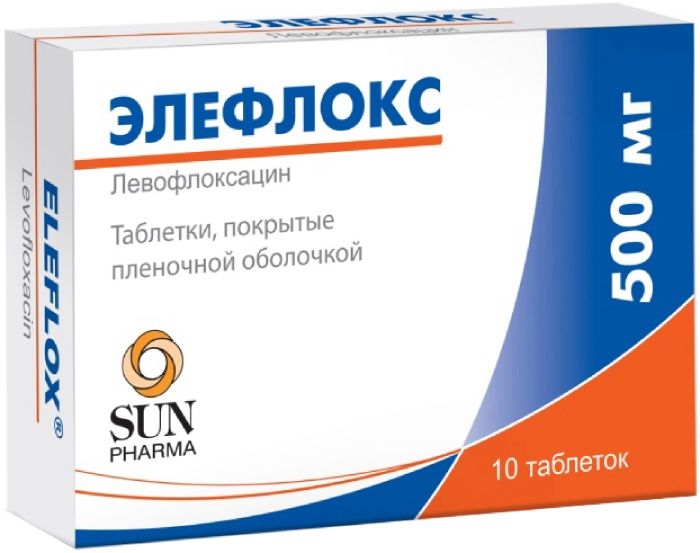
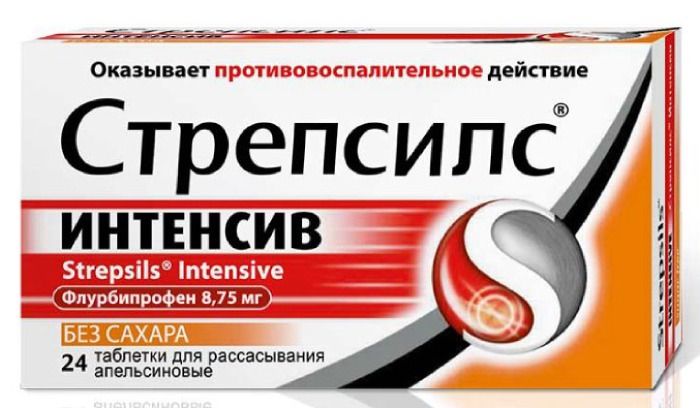

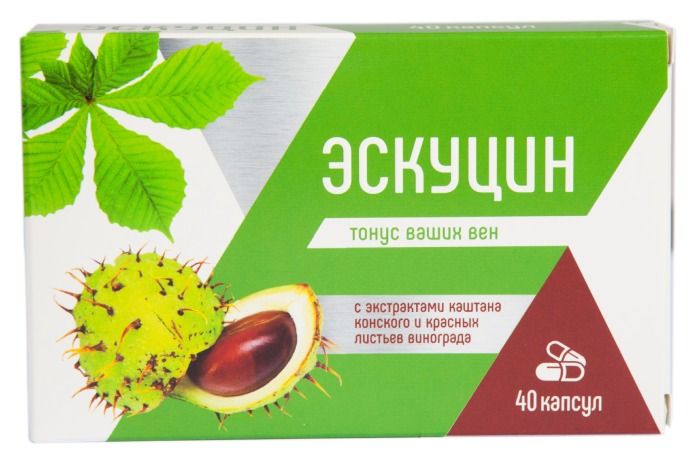
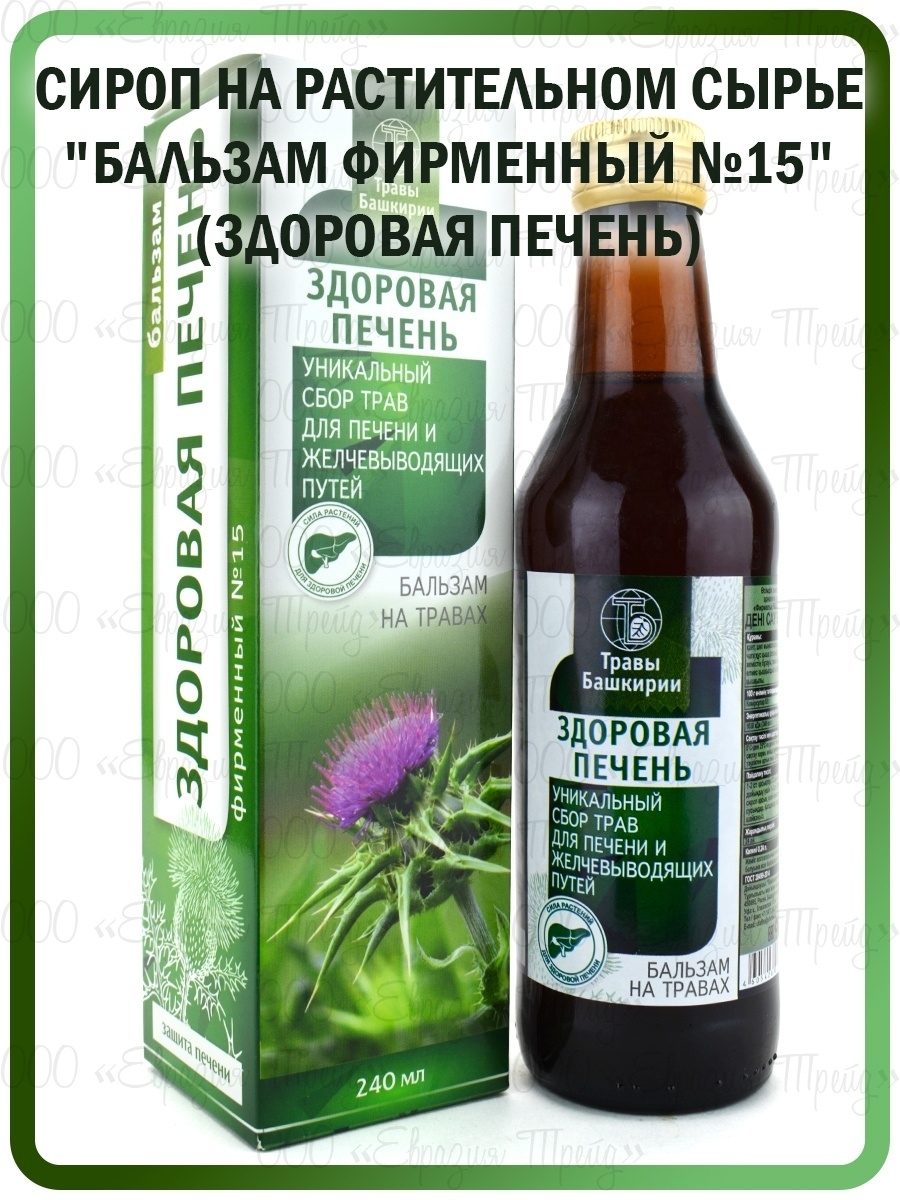

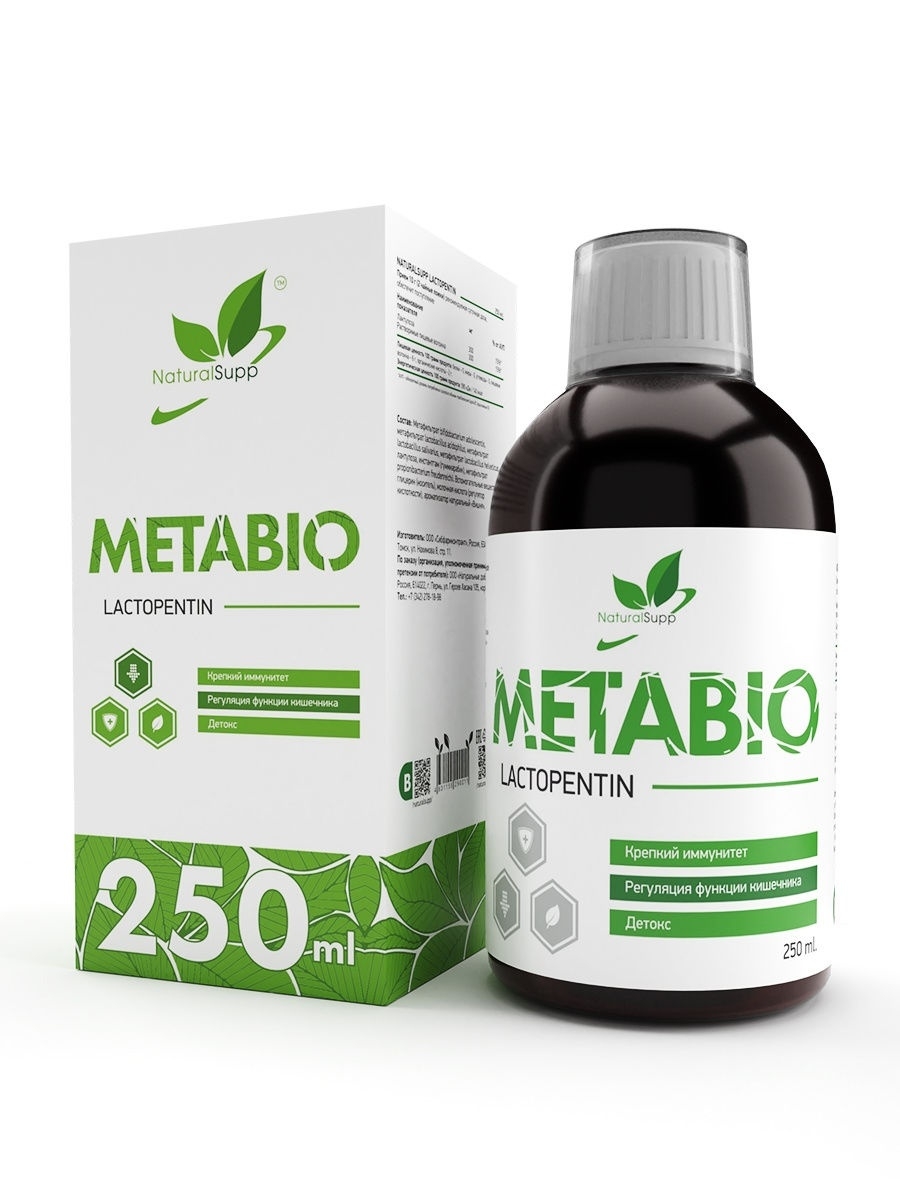




There are no reviews yet.